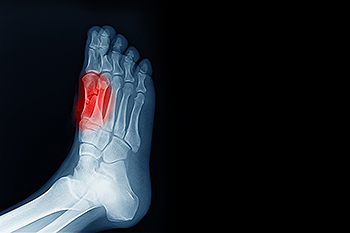
Dr. Kenneth Rosenthal
Dr. Jonathan C. O’Quinn
Dr. Michael J. Price

Dr. Kenneth Rosenthal
Dr. Jonathan C. O’Quinn
Dr. Michael J. Price

When the sesamoid bones in the ball of the feet become inflamed, an individual may develop a foot condition that is known as sesamoiditis. Patients who have this ailment often want to learn about potential remedies, as it can sometimes be painful. The answer is that there are many different steps that a patient may take while consulting with their podiatrist to address sesamoiditis. One potential technique that may be helpful to consider is known as immobilization. A patient may try immobilizing the affected foot by placing it in a cast or by using crutches. By doing so, a patient can effectively ensure the affected foot has time to rest and recover. As a result, there will be less force on the foot, and the sesamoid bones may get the opportunity to heal. If you are currently living with sesamoiditis, it is strongly suggested that you schedule an appointment with a podiatrist today.
Sesamoiditis is an unpleasant foot condition characterized by pain in the balls of the feet. If you think you’re struggling with sesamoiditis, contact one of our podiatrists of Eastern Carolina Foot & Ankle Specialists. Our doctors will treat your condition thoroughly and effectively.
Sesamoiditis
Sesamoiditis is a condition of the foot that affects the ball of the foot. It is more common in younger people than it is in older people. It can also occur with people who have begun a new exercise program, since their bodies are adjusting to the new physical regimen. Pain may also be caused by the inflammation of tendons surrounding the bones. It is important to seek treatment in its early stages because if you ignore the pain, this condition can lead to more serious problems such as severe irritation and bone fractures.
Causes of Sesamoiditis
Treatment for sesamoiditis is non-invasive and simple. Doctors may recommend a strict rest period where the patient forgoes most physical activity. This will help give the patient time to heal their feet through limited activity. For serious cases, it is best to speak with your doctor to determine a treatment option that will help your specific needs.
If you have any questions please feel free to contact our office located in Greenville, NC . We offer the newest diagnostic and treatment technologies for all your foot and ankle needs.